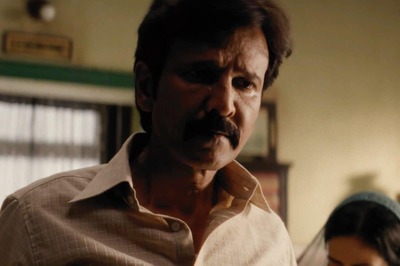
views
The Uttar Pradesh government will make “The Kerala Story” tax-free in the state, Chief Minister Yogi Adityanath said on Tuesday. The announcement comes days after the Madhya Pradesh government said it will give tax-free status to the film in the state.
Meanwhile, West Bengal Chief Minister Mamata Banerjee on Monday had ordered an immediate ban on the screening of the film in the state to avoid ‘any incident of hatred and violence’, a senior state government official said.
The movie has ignited an intense debate and political row, with the Bharatiya Janata Party (BJP) coming out in its support and other parties such as the CPI(M), Congress, TMC etc. slamming the film for it its ‘inaccuracy’ and ‘propaganda.’
Responding to Banerjee’s decision, Union Minister Anurag Thakur said was beyond his understanding ‘why the TMC chief’s sympathies were with terror organisations’ and not with the ‘innocent girls from Kerala’.
Amid the row, let’s understand what ‘the Kerala Story’ is about and how much accuracy the film holds:
What is the Film About?
‘The Kerala Story,’ directed by Sudipto Sen and produced by Vipul Amrutlal Shah, stars Adah Sharma, Yogita Bihani, Sonia Balani, and Siddhi Idnani. The movie is about forced religious conversion and alleges that about 32,000 women in Kerala were converted to Islam and many were sent to ISIS-ruled Syria at the pinnacle of the terror group’s dominance. However, there have been objections regarding to the ‘inaccuracy’ of the claim and that it spreads ‘hate speech’ against Muslims.
However, the filmmakers have rejected opponents’ claims, even though the initial description of the film from ‘32,000 women’ was changed to ‘three women’ later. In an interview, actor Adah Sharma, director Sudipto Sen, and producer Vipul Shah all said that the film “targets terrorists rather than the entire Muslim community,” as per a report by India Today.
Vipul Shah had told the publication, “we don’t want to get into the debate on the numbers, we want to talk about the issue. We want to bring notice to the human tragedy happening in Kerala and in India.”
Is There Truth to the Film’s Claims?
The threat of ISIS recruitment from abroad, especially Britain, has been documented by some reports and papers. In India, the Islamic State has long sought to establish a “Khorasan Caliphate”. The terrorist organisation initially came to the attention of Indian intelligence authorities in 2013, when reports from Syria revealed that there were some Indians within the ranks of the IS combatants, who were then making military and territorial gains in Syria, as per a report by Indian Express.
Since then, numerous Indians have journeyed to Iraq and Syria to fight alongside the Islamic State, and approximately 100 of them have been apprehended by the authorities either on their way back from Syria or while preparing to join the fighters there, the report says. Many others have also been arrested for planning an assault in India after being inspired by the IS.
In a written reply to Parliament in 2019, then-Minister of State for Home Affairs G Kishan Reddy stated that “the National Investigation Agency (NIA) and state police forces have registered cases against ISIS operatives and sympathisers, and have arrested 155 accused from across the country so far.”
The Indian security establishment has taken a cautious approach to the question of IS influence on Indians, the report says. Hundreds of IS recruits or potential recruits have been counselled, made to participate in a deradicalization process, and then released with a warning.
As per a 2016 report in the Guardian which documented incidents of groups allegedly being recruited from Kerala by the IS, said that as per most estimations, India’s Muslim population had supplied negligible people to Isis. “More have gone from Britain, even the Maldives, than from India,” Vikram Sood, former chief of RAW had told the public agency at the time. But the US embassy in Delhi had issued its first Isis-related warning that year, of an “increased threat to places in India frequented by Westerners, such as religious sites, markets, and festival venues.”
The report had described how 23-year-old Hafizuddin Hakim, along with 16 others of his district Kasargod, had left in 2016. Four others left from neighbouring Palakkad.
The only communication from the missing 21 was an encrypted audio recording delivered from an Afghan phone number. “We arrived at our destination,” it stated. “There is no point in complaining to police … We have no plans to return from the abode of Allah.”
According to a US State Department study titled ‘‘Country Reports on Terrorism 2020: India,’ “as of November 2020,” there were 66 known Indian-origin militants linked with ISIS.
According to intelligence organisations, persons from southern India make up almost 90% of this limited number of Indian recruiters, as per Indian Express. An ORF report said the majority of India’s IS recruiters came from Kerala, which accounted for “40 of the 180 to 200 cases” across the country. The majority of Kerala recruits who joined the IS were either working in the Gulf or had returned from there with an affinity for the IS’s extremist ideology.
Read all the Latest Explainers here



















Comments
0 comment